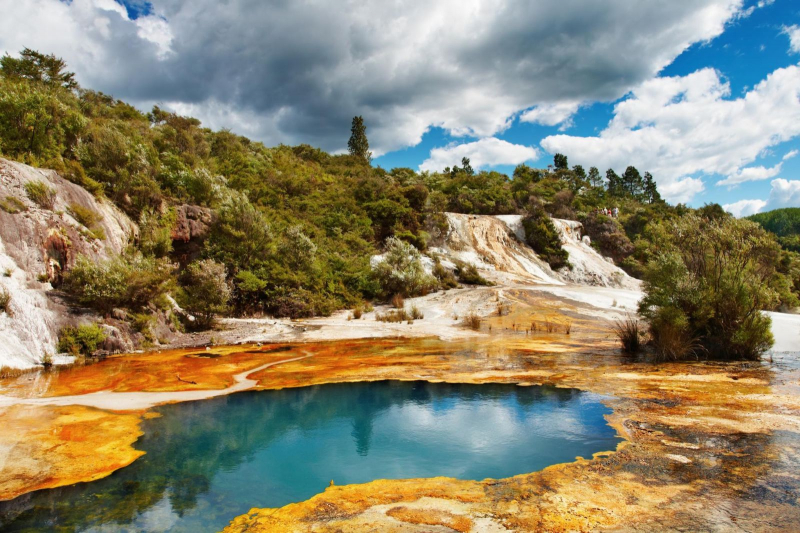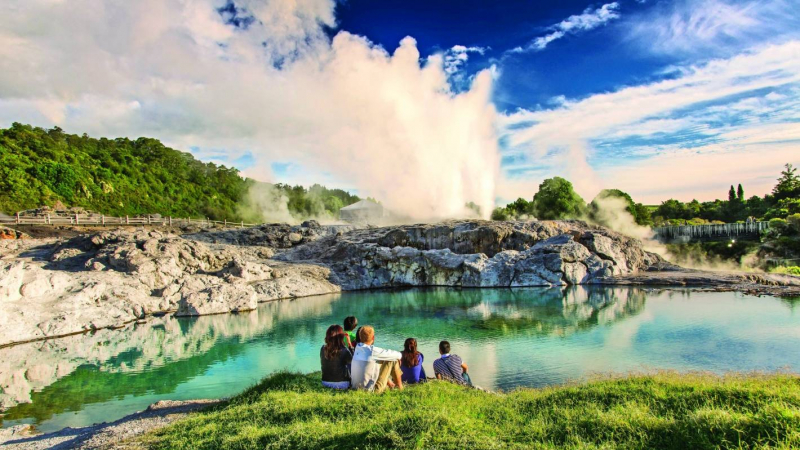Rotorua
Rotorua in Maori means the second largest lake of Kahumatamoe, which is a city located on the southern coast of the lake of the same name in the North Island of New Zealand. Rotorua is famous for its geysers, especially Geyser Pohutu in Whakarewarewa. There are five main geothermal areas, including a sequence of geysers, hot springs, boiling mud pools, and hissing craters.
Rotorua is New Zealand's natural energy hub. Nature endows this land of the Volcanic Plateau on the Pacific Rim region with great beauty and value. Lichens, mosses, and salt structures mixed with natural green, crystal blue of the lake, or earth tones have created beautiful pictures. The peculiar shapes formed from the volcanic geological layer are carved with terraces, valleys, lakes creating spectacular scenes. The city of Rotorua is also known as the metropolis of sulfur because of its hydrogen sulfide emissions. The Middle Eastern Te Ngae region has a distinctive pungent odor due to its dense sulfur content, which lies next to the southern boundary of New Zealand's National Park named Sulfur Point. Hell's Gate is the most geothermally active park in Rotorua, with temperatures up to 93 degrees Celsius. Tikitere or Hell's Gate was once a sacred place for the Ngati Rangiteaorere tribe, and today is a hot spring park owned by the Maori. It is a valuable healing and regenerating point.
Rotorua is the ancestral home of the Te Arawa people who settled here 600 years ago. It is also the soul and cultural heritage of the Maori people in individual and human civilization in general.
Location: North Island
Best time to visit: November – April
Stay options: Millenium Hotel, Arista of Rotorua, Rydges Hotel, and Quest Hotel












